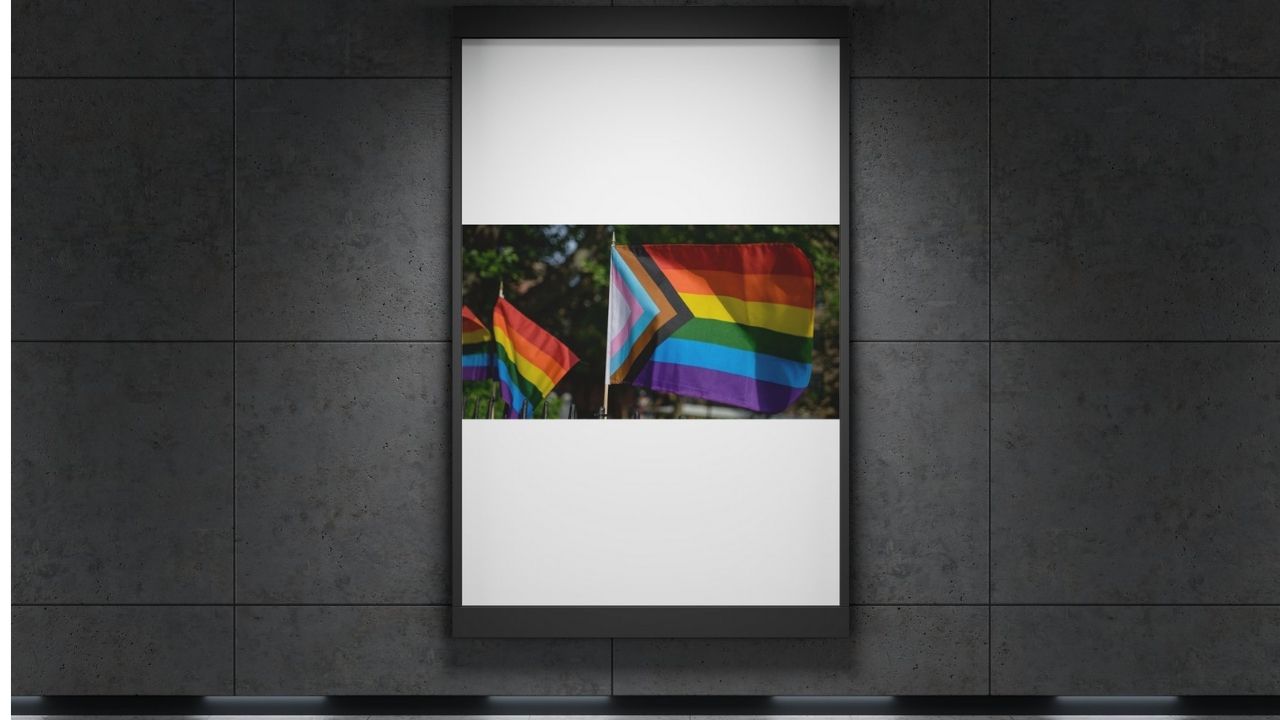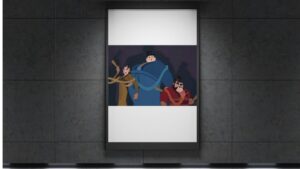Fantasy has always offered readers the possibility to escape into other worlds—places where dragons soar, magic pulses through the air, and impossible adventures come to life. But perhaps its greatest power lies in its ability to imagine not just new landscapes, but entirely new ways of being. In the hands of LGBTQIA+ authors, fantasy becomes a genre of liberation, one where traditional rules—especially those surrounding gender—can be bent, broken, or rewritten altogether.
Historically, fantasy has often upheld binary gender norms. From the brave male knight rescuing the helpless princess to the wise old male wizard guiding the hero’s journey, the genre has long been shaped by heteronormative and patriarchal frameworks. Women were frequently sidelined, and queer or gender-diverse identities were either erased or forced into subtext.
But that narrative is changing. LGBTQIA+ fantasy authors are challenging and transforming these conventions with fresh eyes and bold voices. Through characters who defy gender binaries, worlds that normalize fluid identity, and plots that celebrate transformation and resistance, these writers are using fantasy to reimagine gender itself.
In this article, we’ll explore how queer authors are reshaping the genre, highlight key themes they’re working with, introduce some of the leading names in LGBTQIA+ fantasy, and share a list of recommended reads that push the boundaries of gender representation. Whether you’re a longtime fantasy lover or just beginning to explore queer narratives, this guide will offer insights and inspiration for your next adventure.
The Legacy of Gender Norms in Traditional Fantasy
Classic fantasy has long been grounded in familiar archetypes—many of which reflect rigid, binary understandings of gender. Traditional roles such as the male warrior, destined to lead or protect, and the female healer, fated to support from the sidelines, have dominated the genre for decades. These character types draw heavily from medieval European history and mythology, which in turn were shaped by patriarchal structures.
As a result, many foundational fantasy works reinforced heteronormative and patriarchal ideals. Men were cast as active agents of change—kings, knights, sorcerers—while women, when present, were often love interests, mystical guides, or victims in need of rescue. Queer identities were rarely acknowledged directly; when they appeared, they were usually coded, villainized, or treated as taboo.
These tropes became so normalized that they helped shape readers’ expectations of what fantasy “should” look like. Over time, this led to a genre that, while imaginative in setting, was often limited in its depiction of gender and identity. Readers looking for reflections of themselves—especially those who are trans, non-binary, or queer—found few mirrors in these worlds.
Representation matters because stories help us make sense of ourselves and our possibilities. When certain identities are consistently excluded or misrepresented, it sends a powerful message about who is allowed to exist, thrive, and lead within a narrative. For many readers, especially young ones, the absence of gender diversity in fantasy reinforced narrow ideas about what roles they could inhabit—not just in stories, but in life.
Recognizing this legacy is essential for understanding why the work of LGBTQIA+ fantasy authors today is both revolutionary and necessary. They’re not only telling new stories—they’re
dismantling old frameworks to make room for more expansive and inclusive visions of identity.
How LGBTQIA+ Authors Are Rewriting the Script
LGBTQIA+ fantasy authors are bringing a new vision to the genre—one where gender roles are no longer fixed, binary, or hierarchical. Through imaginative storytelling, they challenge inherited norms and open up space for broader expressions of identity, power, and transformation. Here are some of the key ways they’re doing it:
Fluid Gender Representation
One of the most striking contributions from queer authors is the inclusion of characters whose gender identities exist outside the binary. Non-binary, genderfluid, and trans characters are increasingly taking center stage—not as side characters or symbolic figures, but as fully realized protagonists.
In Neon Yang’s Tensorate series, for example, characters move through gender as a choice rather than a fixed identity, supported by a society that recognizes multiple gender options. This reimagining invites readers to consider how identity might shift in a world not constrained by rigid norms.
Queering Archetypes
Classic fantasy relies heavily on familiar archetypes: the chosen one, the tragic hero, the wise mentor. LGBTQIA+ authors are queering these roles—either by giving them to characters who don’t fit traditional molds or by subverting the archetypes entirely.
In Tamsyn Muir’s The Locked Tomb series, necromancers and sword-wielders are as likely to be queer women as anyone else, and power dynamics are complex, messy, and layered with emotional and gender nuance. These narratives don’t just swap one identity for another—they rethink the structure of heroism itself.
Worldbuilding Beyond the Binary
Many queer fantasy writers are building worlds where binary gender roles simply don’t exist—or where they function very differently. These settings become fertile ground for exploring identity in fresh, unbound ways.
In Rivers Solomon’s The Deep, for instance, the protagonists are descendants of enslaved African women who gave birth in the ocean and evolved into water-dwelling people. Gender in this story isn’t defined by traditional human categories; it’s fluid, embodied, and culturally specific.
By removing the assumptions that underpin most real-world gender systems, these authors allow readers to imagine what life might look like if identity weren’t confined by historical norms.
Themes of Transformation and Identity
Transformation is a natural fit for fantasy, and LGBTQIA+ authors are using this theme to explore gender identity in powerful ways. Magical transitions, shapeshifting, body modification, and reincarnation often mirror real-world experiences of gender discovery and transition.
Books like Ryka Aoki’s Light from Uncommon Stars blend science fiction and fantasy to tell stories of trans identity, self-expression, and chosen family—proving that genre fiction can be both expansive and deeply personal.
Through these innovations, LGBTQIA+ fantasy writers aren’t just changing characters—they’re shifting how readers experience gender and identity through the very fabric of storytelling.
Authors Leading the Way
A growing number of LGBTQIA+ authors are at the forefront of reshaping fantasy literature, challenging readers to rethink gender roles, identity, and power. Their work stands out not just for its creativity, but for the ways it boldly reimagines what it means to live—and thrive—beyond traditional constraints.
Tamsyn Muir – The Locked Tomb series
Tamsyn Muir’s Locked Tomb series, beginning with Gideon the Ninth, is a genre-bending mix of science fiction, fantasy, necromancy, and queer romance. At its heart are complex, gender-nonconforming characters who defy easy categorization. Muir plays with gender presentation and identity through a gothic, irreverent lens, while centering queer relationships and resisting binary expectations. Her characters’ power dynamics, loyalties, and inner conflicts are deeply shaped by queerness in all its forms.
Rivers Solomon – The Deep, Sorrowland
Rivers Solomon’s work is marked by its emotional intensity, visionary worldbuilding, and fearless exploration of identity. In The Deep, Solomon imagines an underwater society descended from African women thrown overboard during the transatlantic slave trade. Gender in this world is fluid and culturally distinct. Sorrowland similarly pushes boundaries, weaving horror, fantasy, and queer liberation into a powerful narrative about bodily autonomy, transformation, and survival. Solomon’s characters often exist in opposition to societal expectations, forging identities on their own terms.
Neon Yang – The Tensorate Series
Neon Yang’s Tensorate Series is a standout example of post-binary fantasy. In this Asian-inspired silkpunk universe, children declare their gender when they come of age—a choice affirmed by society and supported by technology and tradition. Yang’s writing explores themes of rebellion, identity, and systemic power through non-binary protagonists, seamlessly integrating queer perspectives into epic storytelling. Their work invites readers to imagine a world where gender is chosen, not imposed.
Rebecca Roanhorse
Rebecca Roanhorse’s speculative fiction blends Indigenous futurism with sharp social commentary. In books like Black Sun (from The Between Earth and Sky series), Roanhorse creates pre-colonial-inspired worlds where gender roles are not dictated by Western binaries. Characters include trans, queer, and gender-nonconforming figures, integrated into narratives of prophecy, power, and resistance. Her work expands the scope of fantasy through a decolonial and inclusive lens.
C.L. Polk
C.L. Polk’s historical fantasy novels, including Witchmark and Even Though I Knew the End, combine magical intrigue with heartfelt queer relationships. Polk often centers LGBTQIA+ protagonists navigating systemic oppression, love, and the cost of power. Their nuanced approach to gender and romance offers space for queer joy and sorrow within beautifully constructed worlds. Their stories treat queer identities not as anomalies, but as essential threads in the fabric of the narrative.
These authors are not only telling fresh and powerful stories—they are fundamentally changing how fantasy understands and portrays gender. Through their bold and imaginative work, they are opening doors for a new generation of readers and writers who seek more honest, inclusive, and expansive visions of who we can be.
Recommended Reads
The following curated list highlights LGBTQIA+ fantasy books that challenge traditional gender roles through innovative characters, rich worldbuilding, and transformative storytelling. Spanning genres and age categories, these titles offer diverse perspectives and powerful explorations of identity.
The Unspoken Name by A.K. Larkwood
- Genre: Epic Fantasy
- Age Category: Adult
- Why Read It: This high fantasy debut features a lesbian orc assassin and complex gender dynamics within a sprawling world of gods, cults, and cosmic conflict. Larkwood disrupts traditional tropes of the “chosen one” and gendered expectations in fantasy through morally layered characters.
The Tensorate Series by Neon Yang
- Genre: Silkpunk Fantasy
- Age Category: Adult
- Why Read It: Set in a world where children choose their gender upon maturity, this novella series explores identity, state control, and rebellion. Yang’s post-binary universe is a model of inclusive, systemic worldbuilding that reimagines gender as fluid and self-determined.
Girls of Paper and Fire by Natasha Ngan
- Genre: YA Fantasy
- Age Category: Young Adult
- Why Read It: A queer love story unfolds in a brutal empire where girls are chosen as concubines for the king. Ngan combines lush Asian-inspired fantasy with themes of trauma, resistance, and queer love, challenging gendered expectations of passivity and silence.
Sorrowland by Rivers Solomon
- Genre: Gothic Fantasy / Speculative Fiction
- Age Category: Adult
- Why Read It: This haunting novel blends horror, speculative fantasy, and queer theory. It follows a Black, intersex protagonist fleeing a religious cult while undergoing supernatural bodily changes. Solomon explores transformation, queerness, and autonomy in a deeply visceral narrative.
In the Watchful City by S. Qiouyi Lu
- Genre: Sci-fi-Fantasy Blend
- Age Category: Adult
- Why Read It: A lyrical and experimental novella about a non-binary guardian of a city whose body is partially connected to a surveillance system. Lu crafts a fluid approach to both gender and storytelling, resisting categorization and embracing multiplicity.
The Priory of the Orange Tree by Samantha Shannon
- Genre: Epic Fantasy
- Age Category: Adult
- Why Read It: With a wide cast that includes queer women and non-traditional rulers, this epic offers a feminist take on dragon-slaying legend. Shannon builds a world where female leadership and queer relationships are central rather than marginal.
Cemetery Boys by Aiden Thomas
- Genre: Urban Fantasy
- Age Category: Young Adult
- Why Read It: A trans Latinx boy determined to prove his gender identity summons a ghost—and ends up falling for him. Set in a contemporary world infused with Latinx traditions, this YA novel is a heartfelt story of identity, affirmation, and queer romance.
Even Though I Knew the End by C.L. Polk
- Genre: Noir Fantasy
- Age Category: Adult
- Why Read It: A sapphic twist on the classic detective story, set in an alternate 1940s Chicago where angels, demons, and curses run rampant. Polk weaves themes of queer sacrifice, love, and destiny into a tightly plotted narrative with emotional depth.
Pet by Akwaeke Emezi
- Genre: YA Speculative Fantasy
- Age Category: Young Adult
- Why Read It: In a utopian future where evil is supposedly vanquished, a trans girl summons a monster to hunt what her society refuses to see. Emezi explores themes of justice, identity, and moral responsibility through a beautifully surreal lens.
Light from Uncommon Stars by Ryka Aoki
- Genre: Sci-fi-Fantasy Blend
- Age Category: Adult
- Why Read It: A story about a trans violin prodigy, a soul-selling mentor, and a refugee alien family running a donut shop. Aoki masterfully blends fantasy, science fiction, and slice-of-life narrative to explore gender, found family, and healing.
These books not only entertain—they expand the boundaries of what fantasy can be. Whether you’re looking for sweeping epics, tender romances, or daring hybrids of genre, each title offers a thoughtful challenge to conventional gender narratives and invites readers into a more inclusive realm of imagination.
Why It Matters
At its heart, fantasy is a genre of possibility. It allows us to envision entirely new worlds, question inherited truths, and imagine lives shaped by choice rather than constraint. That’s why the work of LGBTQIA+ authors—and the stories they tell about gender, identity, and power—matters deeply.
Seeing Ourselves in Stories
Representation isn’t just about visibility; it’s about validation. For readers across the gender spectrum, seeing characters who share their identities—especially in roles that are heroic, complex, and central—can be transformative. These stories affirm that queer, trans, and non-binary lives belong not only in the real world, but also in realms of magic, prophecy, and destiny.
For too long, traditional fantasy reinforced a narrow range of who could be the hero, the ruler, the chosen one. By rewriting those roles, LGBTQIA+ authors make space for more people to see themselves as powerful, worthy, and capable of change—not just surviving, but thriving.
Empowerment Through Imagination
When fantasy challenges gender norms, it offers readers the tools to reimagine their own realities. A trans teen reading about a gender-shifting warrior, or a non-binary reader discovering a society where identity is chosen freely, may begin to see new possibilities for themselves. These stories can spark confidence, self-acceptance, and a deeper sense of belonging.
Importantly, this empowerment isn’t limited to readers who share the identities depicted. All readers benefit from exposure to diverse experiences, especially when those experiences are portrayed with nuance and authenticity.
Fantasy as a Catalyst for Change
Fantasy has always reflected the values and questions of its time. Today, as conversations about gender and inclusion grow louder and more urgent, queer fantasy helps shape cultural dialogue in meaningful ways. It fosters empathy by allowing readers to inhabit perspectives different from their own. It challenges norms not by lecturing, but by inviting us to believe in better alternatives.
In this way, fantasy becomes more than escapism—it becomes a tool for cultural imagination. By challenging traditional gender roles, LGBTQIA+ fantasy writers don’t just reshape the genre. They help reshape how we understand identity, community, and what it means to be human.
Conclusion
LGBTQIA+ fantasy authors are redefining what the genre can be. By challenging traditional gender roles, they are expanding the boundaries of storytelling—introducing protagonists who defy binaries, building worlds where identity is fluid and self-determined, and centering narratives on queer experiences that have long been sidelined.
Their work is not only reshaping fantasy literature; it is offering readers new mirrors, new maps, and new possibilities. Whether through epic sagas, intimate novellas, or speculative blends of genre, these authors are creating space for more inclusive, authentic, and empowering visions of identity.
As the fantasy landscape continues to evolve, one thing is clear: the future of the genre is queerer, richer, and more imaginative than ever.




